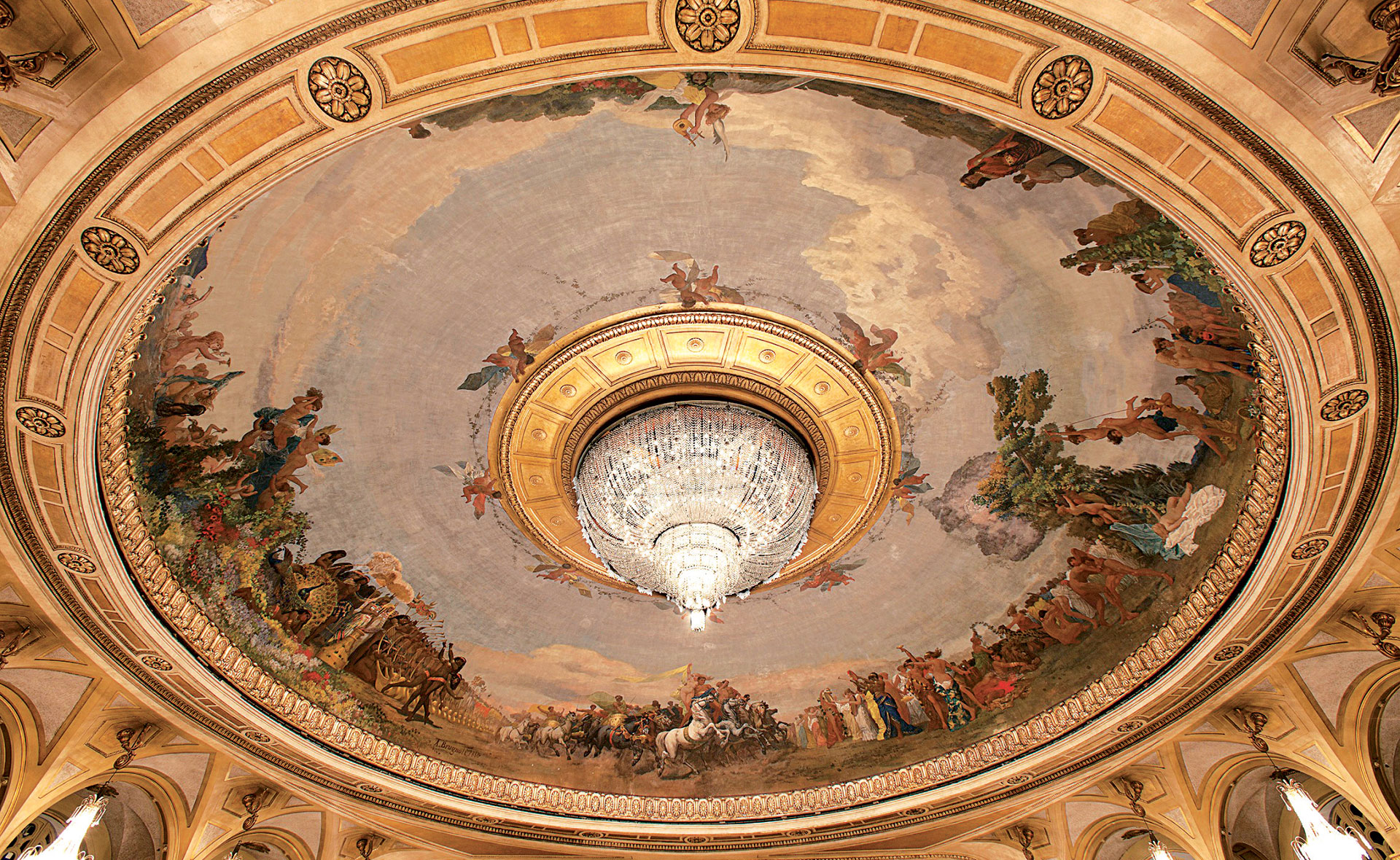A place of artistic and musical excellence, the Teatro Costanzi is a treasure trove of frescoes and architectural jewels to be discovered.

Built in 1879, on the area formerly occupied by the villa of Emperor Eliogabalo (3rd century), the Teatro dell’Opera was inaugurated the following year with the work Semiramide by Gioachino Rossini. Sought after by the entrepreneur Domenico Costanzi, whose name it still bears today (it is also known as the Teatro Costanzi), in 1926 the theatre was bought by the then governor of Rome and underwent an extensive renovation project designed by the architect Marcello Piacentini. Of the original building there remains the horseshoe structure, designed by the architect Achille Sfondrini, a superb “sound box” capable of enhancing the acoustics, and the dome, frescoed by Annibale Brugnoli. After almost one hundred and forty years, the allegorical figures of the artist from Perugia are still there, testifying to his wish to give a new lyricism to decorative art, distancing himself from the academicism of the time. With bold colouring and an unusual circular movement, groups of figures celebrate the show, from tragedy to dance, and so on.
Anyone who has passed under that dome, cannot have failed to admire the majestic chandelier that dominates the centre, a jewel of Italian glass art, which illuminates the hall with 18,000 watts of power. This masterpiece, made in Murano, was set in the Brugnoli dome during Piacentini’s renovation, “making its debut” in 1928 when the theatre was inaugurated with the opera Nerone by Arrigo Boito. Its considerable size means it is considered as one of the biggest chandeliers in Europe. The 27,000 Bohemian crystal drops that make it up are distributed on 17 concentric rings and illuminated by over 250 lamps; its marvellous play of light is guaranteed by a complex cleaning operation, repeated every five years.
